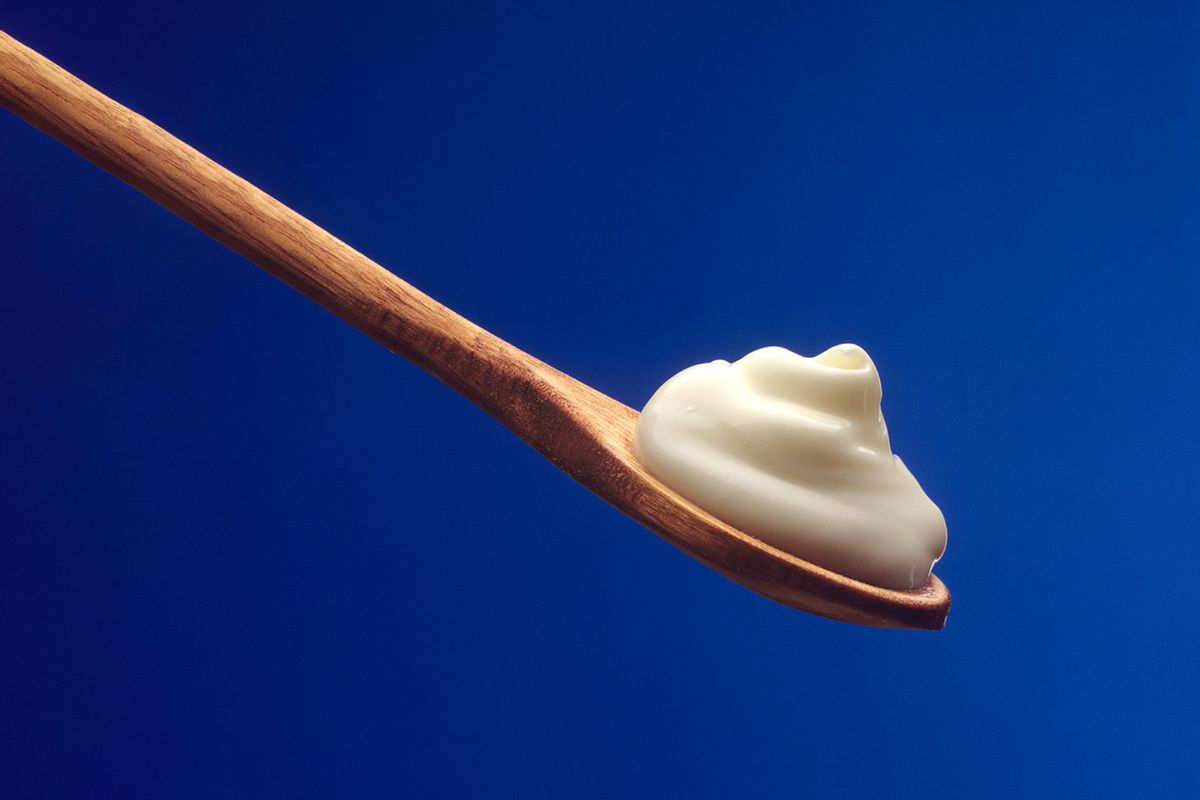If you’ve got a stockpile of eggs and you’re sick of endless omelets, why not make something that uses several eggs and lasts longer than one meal? I’m talking, of course, about mayonnaise.
For much of my life, mayonnaise had a fixed role. It was a key ingredient in my dad’s iconic tuna, in my aunt’s (his twin sister’s) exquisite potato and macaroni salad, and it often gilded the top half of nearly every sandwich I ate — from turkey and roast beef to a classic Italian sub.
In college, I once overheard a friend order a sandwich in the dining hall that would soon become my go-to for months: chicken cutlets, Muenster, pesto and mayonnaise on a hard roll. Toasted, open-faced. Once it was out of the oven, she’d add shredded lettuce and sliced tomatoes. I haven’t had that sandwich in more than a decade, but just writing about it now, I’m absolutely fantasizing. It was mind-boggling. I remain indebted to that friend for the discovery.
It was the first time I realized mayonnaise could combine with other ingredients to become something greater — something nuanced and deeply flavorful.
Still, I didn’t think about it much after that. I wasn’t into pimento cheese. I never baked mayonnaise into cakes or slathered it on chicken before roasting. For a while, mayo was back to being background noise in my cooking.
Then came culinary school.
In those early lessons, I sometimes scoffed, thinking I knew the basics already. (“This herb is obviously rosemary!” I’d huff.) But on mayonnaise day, standing with a balloon whisk and silver bowl, I assumed I knew what was coming.
I was wrong.
We made mayonnaise with nothing more than egg yolk, oil, garlic, lemon and salt—and the result was astonishing. I’d grown up with Hellmann’s, but this was the first time I tasted what mayonnaise could be: rich, fatty, thick and creamy. Almost like a savory frosting. I had to actively stop myself from eating it straight from the bowl.
The egg and oil gave it structure, the garlic brought heat, the lemon lent brightness, and salt tied it all together. It was legitimately perfect. That first taste was a revelation. Suddenly, mayonnaise had range.
From then on, I started seeking out dishes that used mayonnaise. I bought cold cuts just to have an excuse to make sandwiches with homemade mayo. I experimented: sundried tomato, a hit of Sriracha, chopped herbs—each variation fed the obsession.
We need your help to stay independent
Eventually, culinary school got more challenging (and more delicious), and my mayo fixation cooled. But years later, I was working with a cookbook author who was developing a range of aioli recipes. We used a solid base, then blended in herbs, spices, purees—you name it. We used an immersion blender, which was fun, but I still loved the fundamental simplicity of the bowl-and-whisk approach. I’d bring those mayos home and do the same thing I did back in school: build meals around them.
These days, I often have southern classic Duke’s Mayo in the fridge (it’s become easier to find near me and I’ve become a huge fan). But homemade mayonnaise certainly hasn’t disappeared from my repertoire.
Quick note on the mayo-aioli debate: Traditionally, aioli was made with just garlic and oil (think toum), while mayonnaise included egg. These days, the terms are used interchangeably—or, let’s be real, some people just call mayo aioli because they like how it sounds. Fun fact: my favorite culinary school instructor pronounced it “eye-oh-LEE,” with emphasis on the last syllable. I always loved that.
Some people swear by store-bought for convenience — and fair enough. I have no desire to make Pop-Tarts or a 3 Musketeers bar from scratch, either. But when it comes to mayo? I really think you should try making it at least once. It might change how you think about condiments altogether. It did for me.
Mayonnaise is a reminder that something deeply flavorful, rich and airy can come from the most basic ingredients: egg, garlic, lemon, oil, salt. There’s a kind of alchemy there. One you have to taste to believe.
Ingredients
2 egg yolks
2 lemons, juiced
1 clove garlic
1 1/4 cup neutral oil
Kosher salt
Directions
- In your largest bowl, begin whisking yolks and lemon juice until some air has been introduced and the mixture is totally homogenous.
- Add the garlic and continue to whisk.
- Add the oil in a very slow stream, continually whisking, until you've poured all of the oil in and the mixture has become fluffy, light and emulsified.
- Season with salt, give one big stir and taste. You might need more.
Cook's Notes
-Some use a blender or food processor, some use an immersion blender, but I love the bowl-and-whisk method, as stated. It can also be helpful to anchor your bowl in a kitchen towel, especially if your whisking often tends to get especially vigorous.
-Be sure to use a neutral oil, like canola, vegetable or avocado.
-Steer clear of olive oil or extra virgin olive oil here, which will change the flavor and color considerably.
-I'm not a Dijon person and I find that it muddies the flavor, but you can throw some in, if you'd like — some also add a vinegar to help round out the flavors, but I don't think it's necessary.
-Use a microplane to grate the garlic, or mince it incredibly finely — you really don't want to bite into an errant, acrid chunk of raw garlic here. Or, if you rather, opt for simply garlic salt, garlic powder or even a garlic puree to avid any sort of texture whatsoever.



Shares